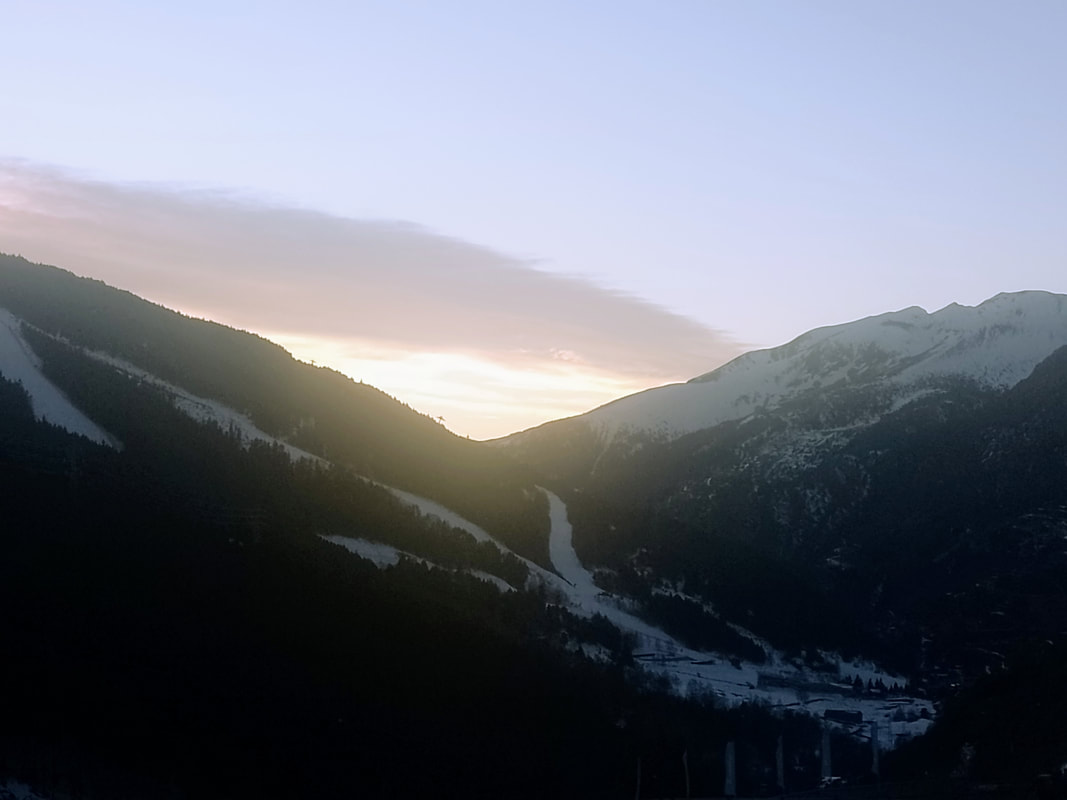|
Having spent a week snowboarding out in Andorra, I thought it would be fitting to do a post on the Gods, myths, and legends of the pyrenees mountains which run through Andorra. Andorra is a small principality (a country governed by a Prince or Princess, although these roles are honorary) between France and Spain, and shares the Pyrenees mountains with several other countries. Despite its small size (a population of less than 90,000), it is one of the oldest countries in the world, dating back to 803 AD. As such, there is a wide range of myths and legends pertaining to these mountains, and these can differ from region to region. The Pyrenees has captured the imagination for thousands of years. With its rugged, breathtaking landscape it is difficult not to see where myth and mystery abound in its snowy peaks. In fact, some of the most well known myths of the Pyrenees actually comes from Ancient Greece and revolves around the creation of the mountains themselves. In one version of the tale, Pyrene was the daughter of King Bebrycius, and lover of the Greek hero Hercules. She gave birth to a serpent like monster and was so terrified she fled into the woods where she died. Stricken by grief, Heracles built a tomb by piling rocks on top of one another, and this became the Pyrenees mountains, named after his love. In another version, Pyrene was the lover of Hercules but abandoned by him, which is why she fled into the forest where she succumbed to her death, devoured by wild beasts. In another tale, there was a three headed creature named Gerion who gained control of the Kingdom of Tubal (Spain). This creature was in love with Pyrene, but she in turn was in love with Hercules. Fearing for her life from this terrifying monster, Pyrene fled. When Gerion failed to find the princess, he set the whole area on fire, despite knowing that the princess would most likely perish in the flames. The fire spread and destroyed everything in its path, with entire villages being utterly destroyed. Surrounded by flames and knowing death was near, Pyrene screamed for help. Hercules heard and ran to the princesses rescue, but was too late. He then built her tomb out of rocks, and this became the Pyreneese mountain range. Other tales from the Pyrenees describe the mountains as giants. This isn't unique to the Pyrenees, but it was said that the highest peaks of the mountains were actually sleeping giants, and their laments could be heard on the storms, specifically the Aneto summit in Spain. Another myth holds that the Puigmal summit is actually a human, whose presence guarded and protected the natural mountainous environment.
Other creatures can also be found in tales from this area. Tantugou, who is known throughout the Louron and Larboust valleys was a figure who protected shepherds and their herds. He was depicted as a tall, bearded man who dressed in a hooded tunic with animal skins, who carried with him a club. There is some debate as to whether he was a God or some sort of other being - accounts differ depending on the source. There was the Basajun, which translates as 'wild Lord', who despite also being a protective figure was more feared due to his human/animal cross appearance. Then we have the Drac, who was sometimes described as being dragon like, sometimes like a leprechaun, and was actually a form that the devil took in order to lure people away. From the lakes and rivers which run through the Pyrenees we have the Duanas d'aiga, feminine water spirits akin to mermaids or the fae who could be spotted in these bodies of water before they retreated to the caves they lived in. As well as creation stories and mythical creatures, several deities have also been associated with the Pyrenees. Thanks to various inscriptions and other historical evidence, we know of roughly 45 deities associated with the pyrenees. Some of them are only mentioned the once, such as the God Xuban. Of these deities, it is difficult to be able to discern much about them. However, it is worth noting that similar names pop up. For example, at Escugnau (in the Val d'Aran), an inscription can be found dedicated to Iluberrixo. This name resembles other deity names, such as Iluron or Ilumber, and even some Pyranean Roman towns such as Illiberis. As such, it has been wondered if rather than separate deities, these are all in fact one deity who has been adpoted and adapted slightly across different regions and dialects. The most well known of these is the God Abellio (also known as Abellion), with roughly eight insciptions being found dedicated to him. One of these depictions can be found on the Croix de Beliou. This is a stone cross, believed to be the grave of Millaris, a 1,000 year old patriarch who can be found in tales from across the region. Historians believe that he was a solar God, or possibly associated with apple trees, and he is often spoken of in the same vein as the Roman Apollo, and also the Celtic Belen (Belenus). However, it is worth noting that Abellio is only attested among the Aquitani, a people neither Greek nor Celtic. This is just a very brief snapshot into the myths and legends of the Pyrenees mountains - there is a lot more information out there, but for now I thought this was an interesting insight into a culture which is never really spoken about in much detail.
0 Comments
Leave a Reply. |
The Weekly Witch:Once I week I talk about something 'witchcraft' related I have done with my week. How we incorporate witchcraft into our every day lives is always a topic that has interested me, so I wanted to start this blog to explore it further! Archives
August 2023
Categories |

 RSS Feed
RSS Feed
